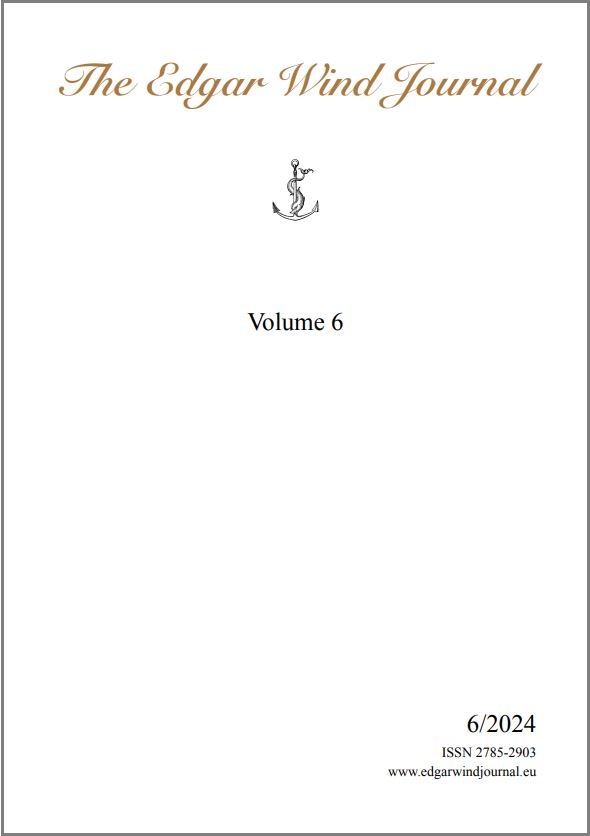Luke Morgan
Monash University, Melbourne
https://orcid.org/0000-0002-0923-8117
Volume 6, April 2024
Abstract
The 1666 catalogue of the Wunderkammer assembled by Lodovico and Manfredo Settala in Milan contains a description of a ‘beautiful statue of bronze’ that could walk across a garden. According to the author of the catalogue, Pietro Francesco Scarabelli, ‘because of the stupor [stupore] that such a motion occasions, whoever begins to observe it is rendered immobile.’ Scarabelli is clearly describing an automaton, the uncanny lifelikeness of which has the paradoxical effect of rooting the viewer to the spot, temporarily incapable of movement or agency. Historians have paid little attention to the automata of the early modern garden. When automata are discussed, they are usually dismissed as inconsequential giochi or scherzi (games or tricks). This essay makes a case for taking the automata of the garden seriously, with a particular focus on Francesco de’ Vieri’s comments about those of the Villa Medici (now Demidoff) at Pratolino in his guide of 1587. There are two main trajectories of argument: first, that the lifelike, self-moving automaton should be understood in relation to the theory of mimesis in art; and second, that the condition of stupore that Scarabelli and Vieri both claim is elicited by the inexplicability of mechanical movement is primarily an aesthetic experience. The essay concludes with the suggestion that the liminal status of the automaton – between nature and culture – extends to the garden itself.
Keywords
Automata, early modern gardens, Francesco de’ Vieri, mimesis, artificial grottoes
Bibliography
Amico, Leonard N., Bernard Palissy: In Search of Earthly Paradise (Paris and New York: Flammarion, 1996).
Baldi, Bernardino, ‘Discorso di qui tradvce sopra le machine se moventi,’ in Hero of Alexandria, De Herone Alessandrino de gli automati ouero machine se mouenti, ed. and trans. Bernardino Baldi, 2nd ed. (Venice, 1601).
Barbieri, Patrizio, Hydraulic Musical Automata in Italian Villas and Other Ingenia, 1400–2000 (Rome: Gangemi Editore, 2020).
Bredekamp, Horst, The Lure of Antiquity and the Cult of the Machine: The Kunstkammer and the Evolution of Nature, Art and Technology, trans. Allison Brown (Princeton: Marcus Wiener Publishers, 1995).
Brunon, Hervé, ‘Pratolino: Art des jardins et imaginaire de la nature dans l’Italie de la seconde moitié du XVIe siècle,’ rev. ed., Ph.D. diss., Université Paris I Panthéon-Sorbonne, 2008).
Caus, Salomon de, Le Jardin Palatin. Hortus Palatinus (Paris: Éditions du Moniteur, 1981).
Falguières, Patricia, ‘Sur le renversement du maniérisme. Especes infimes, generation spontanée et pensée du type dans la culture du XVIe siècle,’ in Ernst Kris, Le Style rustique, trans. Christophe Jouanlanne (Paris: Macula, 2005), 193-266.
Filson, Lily, ‘Magical and Mechanical Evidence: The late-Renaissance Automata of Francesco I de’ Medici,’ in Evidence in the Age of the New Sciences, eds. James A. T. Lancaster and Richard Raiswell (Cham: Springer International Publishing, 2018), 177-206.
Hanafi, Zakiya, The Monster in the Machine: Magic, Medicine, and the Marvelous in the Time of the Scientific Revolution (Durham and London: Duke University Press, 2000).
Homer, The Iliad, trans. E. V. Rieu, rev. ed. Peter Jones and D. C. H. Rieu (London: Penguin, 2003).
Kris, Ernst, The Rustic Style, trans. Linda B. Parshall (Washington, D.C: Dumbarton Oaks, Trustees for Harvard University, 2023).
MacDougall, Elisabeth Blair, Fountains, Statues, and Flowers: Studies in Italian Gardens of the Sixteenth and Seventeenth Centuries (Washington, D.C.: Dumbarton Oaks Research Library and Collection, 1994).
Malgorzata Szafranska, ‘The Philosophy of Nature and the Grotto in the Renaissance Garden,’ Journal of Garden History 9: 2 (1989): 76-85.
Morel, Philippe, Les grottes maniéristes en Italie au XVIe siècle (Paris: Éditions Macula, 1998).
Nashe, Thomas, The Unfortunate Traveller (1594), in An Anthology of Elizabethan Prose Fiction, ed. Paul Salzman (Oxford: Oxford University Press, 2008), 205-309.
Pliny the Elder, Natural History: A Selection, trans. John F. Healy (London: Penguin Books, 2004).
Rinaldi, Alessandro, ‘La ricerca della “terza natura”: artificialia e naturalia nel giardino Toscano del ’500,’ in Natura e artificio: L’ordine rustico, le fontane, gli automi nella cultura del Manierismo europeo, ed Marcello Fagiolo (Rome: Officina, 1979), 168-72.
Scarabelli, Francesco, Museo, ò Galeria, adunata dal sapere e dallo studio del sig. canonico Manfredo Settala nobile milanese (Tortona: Per li figliuoli del qd. Eliseo Viola, 1666).
Strauss, Linda M., ‘Reflections in a Mechanical Mirror: Automata as Doubles and as Tools,’ Knowledge and Society: Studies in the Sociology of Culture Past and Present 10 (1996): 179-207.
Summers, David, ‘Pandora’s Crown: On Wonder, Imitation, and Mechanism in Western Art,’ in Wonders, Marvels, and Monsters in Early Modern Culture, ed. Peter G. Platt (Newark: University of Delaware Press, 1999),45-75.
Summers, David, Michelangelo and the Language of Art (Princeton: Princeton University Press, 1981).
Taegio, Bartolomeo, La Villa, trans. Thomas E. Beck (Philadelphia: University of Pennsylvania Press, 2011).
Trust, E. R., Medieval Robots: Mechanism, Magic, Nature, and Art (Philadelphia: University of Pennsylvania Press, 2015).
Vasari, Giorgio, Vasari on Technique, trans. Louisa S. Maclehose (New York: Dover Publications, Inc., 1960).
Vieri, Francesco de’, Discorsi di M. Francesco de’ Vieri, detto il Verino Secondo, Cittadino Fiorentino. Delle Maravigliose Opere di Pratolino, & dell’Amore (Florence: Giorgio Marescotti, 1587).
Wind, Edgar, Art and Anarchy (London: Faber & Faber, 1963).
The Edgar Wind Journal 6: 128-143, 2024
DOI: 10.53245/EWJ-000033
Copyright: © 2024 L.Morgan. This is an open access, peer-reviewed article published by Bernardino Branca
